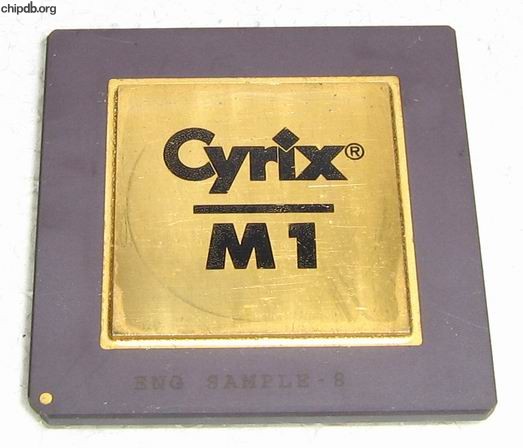
Everything is exactly where you’d expect it, and since the version text in the bottom corner states it is reporting as Windows NT 5.3, or 64-bit Windows XP Professional, I’m guessing it has more influence from that OS than Windows 2000. Aside from the ReactOS logo on the start menu it’s indistinguishable from Windows XP with the classic theme, at least as I remember it.
Reactos cyrix Pc#
My first impression was that I was back in a Windows PC circa 2003 sporting the grey-and-blue Windows 95-style classic theme, such is their success at creating a clone of Windows from that era. I found I needed greater than a 1 GB qemu partition to have space enough for extra software, but it ran happily enough with the gigabyte of memory I allocated to it.
Reactos cyrix install#
The qemu install was faultless though, and I was soon in the ReactOS desktop. I don’t blame it for not running on the Dell, it doesn’t yet claim to have anything near comprehensive hardware support. I downloaded the former, and first tried to install it on an old Dell Core Duo laptop which it failed to do, before creating an image to install it in a qemu environment. There are two ReactOS ISOs, an installer, and a live CD. It’s 2003, And Hackaday Hasn’t Started Yet If it wasn’t for the ReactOS logo, you’d swear this was a Windows box. The result was both a peek at the current state of the project, and a chance to think about the place of a Windows clone in 2020. Version 0.4.13 is the latest in a long line of incremental updates, and remembering those early ReactOS ISOs when I saw their announcement, I thought I’d give it a spin. ReactOS is very much still with us, and indeed has just seen a new release. You might think that in the nearly two decades since then it would have become an irrelevance and its contributors moved on to other work, but no.


One of the ISOs I remember downloading back then was an early version of ReactOS, a project with the lofty aim of creating an open-source equivalent of Windows NT. A couple of decades ago that was how we’d take a look at a new Linux distro, and at the time we considered it to be nothing short of incredible that such a thing was possible. Do you remember when trying a new OS meant burning a CD? Not merely downloading an ISO and mounting it on a USB drive, but taking a circle of polycarbonate and hoping you didn’t get a buffer underrun as the file you’d spent an entire day downloading was burned onto it.


 0 kommentar(er)
0 kommentar(er)
